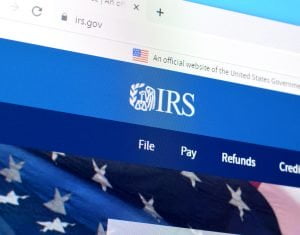
On April 15, 2020, the IRS announced the launch of the “Get My Payment” online tool which provides individuals with a status of their stimulus payment, including:
- How the stimulus payment will be sent (direct deposit or mail)
- The date the money will be mailed or scheduled to be deposited to your bank account
- How you can provide your current bank information for direct deposit into your account
The online tool is available here. The tool is similar to the IRS “Where’s My Refund?” tool, which allows taxpayers to track their federal tax refund.
In early attempts to register for this online tool, filers were experiencing site delays. The site is also returning a statement to some users that the IRS is unable to provide the status of a stimulus payment at the current time. No doubt bugs will have to be worked out over time.
The “Get My Payment” tool is different than the “non-filer” tool used by individuals who aren’t required to file a tax return, as described later in this article.
If your payment has already been scheduled, you can’t use the feature to provide the IRS with your bank information for direct deposit.
If you are providing direct deposit information, here is the information you will have to provide when using this new IRS stimulus payment tool:
- Name
- Address
- Email address
- Social Security number
- The name of your bank
- Your bank account number, which can be up to 17 characters (see image below). On the sample check below, the account number is 2020202086.
- The “routing number” for your bank, which must contain 9 digits (see image below). On the sample check below, the routing number is 250250025.
- Don’t include the check number (1234 on the image below).

It is important to double-check that you have entered the correct numbers, as entering an incorrect number could result in a 4-6 week delay of payment.
Background on the Stimulus Payment
In late March, the federal government passed the CARES Act in response to the coronavirus crisis. As part of this new legislation, individual workers, independent contractors, gig workers, and freelancers are immediately entitled to receive a onetime $1,200 payment ($2,400 for married couples) from the IRS, plus an additional $500 per dependent 16 years or younger.
In order to qualify for the full amount, you have to have earned $75,000 or less in the prior year ($150,000 or less if married). Above those income levels, the stimulus payment decreases until it stops altogether for single people earning $99,000 or married couples who have no children and earn $198,000. If you haven’t prepared your 2019 tax return, you can use your 2018 return to see if you meet the required income level.
How can you make sure you get this stimulus payment quickly if you do qualify? The key is for the IRS to have the direct deposit account information for your bank account. Otherwise the payment will be sent by mail and could be delayed for several months.
If You Have Filed Your 2018 or 2019 Tax Return With the Correct Deposit Information
If you have already filed your 2018 or 2019 tax return with the IRS with your correct direct deposit information, you don’t need to do anything more and you shouldn’t use the new online IRS tool discussed above.
If You Haven’t Filed Your 2018 or 2019 Tax Return
If you haven’t yet filed your 2018 or 2019 tax return with the IRS, you should file either one electronically with the IRS (unless you are exempted as a social security benefits recipient as discussed below). There are some free websites that allow you to file your return electronically. See the sites recommended by the IRS at www.irs.gov/filing/free-file-do-your-federal-taxes-for-free. Make sure to include your direct deposit information in this filing (where it asks if you want any refund sent by direct deposit).
What to Do If You Filed Your 2018 or 2019 Tax Return but Without Your Current Direct Deposit Information
If you did file your 2018 or 2019 tax return but didn’t include your current direct deposit information, use the “Get My Payment” tool discussed at the beginning of this article to provide the IRS with the current information.
Social Security Recipients
On April 1, 2020, the Treasury announced that Social Security recipients who are not typically required to file a tax return will automatically receive their payment directly to their bank account, without having to file a tax return, so long as the IRS has their direct deposit information.
Taxpayers Who Don’t Usually File a Tax Return
On April 10, 2020, the IRS announced that taxpayers who don’t usually file a tax return can get their stimulus payment through a different online tool found here. The people who should use this tool are eligible U.S. citizens or permanent residents (a) who had gross annual income that did not exceed $12,000 ($24,000 for married couples) or (b) who were not otherwise required to file a federal income tax return for 2019 and didn’t plan to. You file under the section entitled “Non-Filers: Enter Payment Info Here.”
